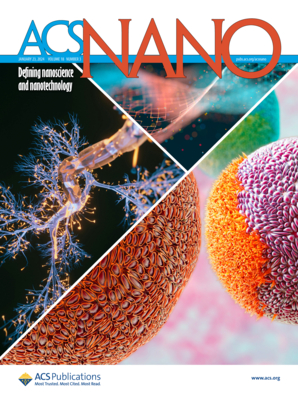High-Entropy Conversion-Alloying Anode Material for Advanced Potassium-Ion Batteries
IF 15.8
1区 材料科学
Q1 CHEMISTRY, MULTIDISCIPLINARY
引用次数: 0
Abstract
Conversion-alloying dual-mechanism materials are considered as promising anodes for potassium-ion batteries (KIBs) owing to multielectron transfer with high theoretical specific capacity and low operating voltage, whereas large lattice strain and sluggish kinetics hinder the rate and cyclability ability. Herein, a high-entropy telluride (HET, Sb1.4Bi0.2Sn0.2Co0.1Mn0.1Te3) is proposed as an advanced anode material for KIBs. The disordered coordination environment originated from high-entropy composition assists HET to eliminate band gap, enhance K-ion adsorption capability, and lower K-ion migration barrier, thereby contributing superior electrochemical dynamics behavior. It is verified that HET stores K-ion via a conversion-alloying dual-reaction mechanism employing Sb, Bi, Sn, Co, and Mn ions as redox sites for charge compensation, where great structure stability with the suppressed volume variation can be achieved for HET benefited from high-entropy and “cocktail” effects. Robust KF-rich solid electrolyte interface film is tailored on HET via compatible KFSI-based electrolyte chemistry. Therefore, HET delivers a high initial specific capacity of 376.5 mAh·g–1 at 50 mA·g–1, outstanding rate performance (175.7 mAh·g–1 at 2000 mA·g–1), and great cycling stability with long lifespan over 500 cycles. Besides, a high-energy-density (428.8 Wh·kg–1) K-ion full battery is assembled. This work offers a compelling avenue for achieving high-performance anode material for KIBs via a high-entropy strategy.

求助全文
约1分钟内获得全文
求助全文
来源期刊

ACS Nano
工程技术-材料科学:综合
CiteScore
26.00
自引率
4.10%
发文量
1627
审稿时长
1.7 months
期刊介绍:
ACS Nano, published monthly, serves as an international forum for comprehensive articles on nanoscience and nanotechnology research at the intersections of chemistry, biology, materials science, physics, and engineering. The journal fosters communication among scientists in these communities, facilitating collaboration, new research opportunities, and advancements through discoveries. ACS Nano covers synthesis, assembly, characterization, theory, and simulation of nanostructures, nanobiotechnology, nanofabrication, methods and tools for nanoscience and nanotechnology, and self- and directed-assembly. Alongside original research articles, it offers thorough reviews, perspectives on cutting-edge research, and discussions envisioning the future of nanoscience and nanotechnology.
 求助内容:
求助内容: 应助结果提醒方式:
应助结果提醒方式:


